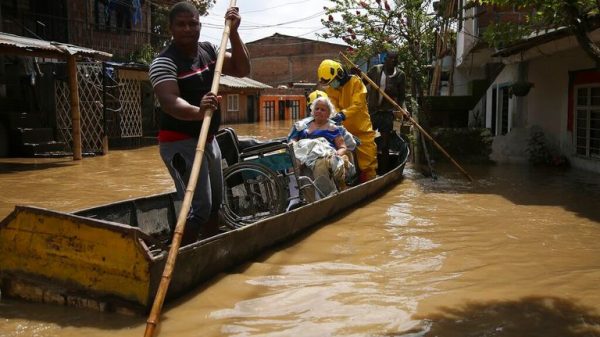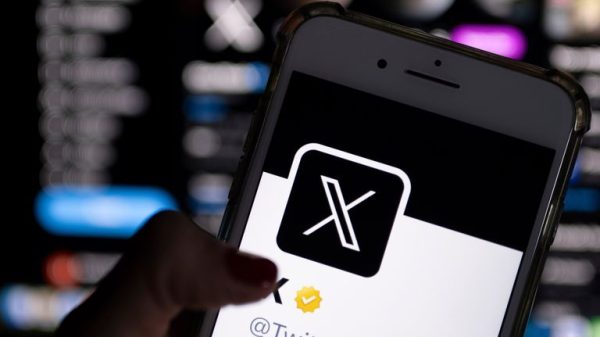Israel and Lebanon have accepted a US-backed proposal to end the 13-month border conflict that spiraled into an all-out war in September with Hezbollah.
From the White House’s Rose Garden, US President Joe Biden said the deal that took effect early Wednesday morning, at 4 a.m. local time (9 p.m. ET on Tuesday) “is designed to be a permanent cessation of hostilities.”
The ceasefire “will create the conditions to restore lasting calm and allow residents in both countries to return safely to their homes on both sides of the Blue Line,” according to a joint statement from Biden and French President Emmanuel Macron, referring to the de facto border between Lebanon and Israel.
The US and France will work with both sides to “ensure this arrangement is fully implemented and enforced.”
After Israel’s security cabinet voted to approve the deal on Tuesday, Israeli President Isaac Herzog said the Lebanon ceasefire needs to guarantee the safety of residents in northern Israel.
“The emerging arrangement will have to meet only one test – guaranteeing full security for all residents of the north,” he said on X. While the ceasefire is “correct and important,” Herzog said Israel would protect its citizens “in any way.”
Lebanon’s Prime Minister Najib Mikati welcomed the ceasefire deal and thanked both the US and France for their efforts during a call with Biden on Tuesday.
Hezbollah has also agreed to the terms of the deal, according to multiple Lebanese sources.
What the deal entails
The deal stipulates a 60-day cessation of hostilities, which negotiators have described as the foundation of a lasting truce. During that time, Hezbollah fighters are expected to retreat some 40 kilometers (25 miles) from the Israel-Lebanon border, while Israeli ground forces withdraw from Lebanese territory.
UN Security Council Resolution 1701, which ended the last all-out war between the two countries in 2006, has been the basis of the deal and the negotiations have mainly revolved around the treaty’s enforcement.
Under the agreement, Lebanon would implement a more rigorous supervision of Hezbollah’s movements south of the country’s Litani river, to prevent militants from regrouping there. United Nations peacekeeping troops, the Lebanese military and a multinational committee will be tasked with supervising the Iran-backed group’s movements.
Israel has vowed to resume military operations in case of a breach of the agreement.
Will the truce hold?
The ceasefire agreement heralds much-needed respite for Lebanese civilians, hundreds of whom have been killed in Israeli airstrikes, as well as for Israelis, millions of whom have taken to shelters amid Hezbollah’s daily barrage of rocket fire.
But there are questions about how long the truce may hold for. Israel insists that it will take military action in response to any breach of the agreement. That could reignite the conflict, putting US-backed diplomatic efforts in jeopardy.
Meanwhile, Hezbollah has agreed to withdraw its forces north of the Litani river, some 40 kilometers from the Israel-Lebanon frontier at its furthest point. It made that concession in 2006 but violated it, building a vast underground infrastructure in an area where its members are part of the social fabric. Israel also breached the 2006 agreement by conducting near daily overflights in Lebanon.
The truce violations allowed Hezbollah to strengthen its forces tremendously, while Israel gathered intelligence on the militant group that would prove to be a game-changer in the 2024 war.
Still, the 2006 truce held for nearly two decades, the longest period of calm on that political fault-line since the 1960s.
How Hezbollah and Israel got here
Hezbollah first began to fire at Israeli-held territory a day after Hamas’ October 7 surprise attack in Israel, which killed around 1,200 people and took more than 250 hostages, triggering Israel’s ongoing devastating offensive in Gaza. Hezbollah leader Hassan Nasrallah repeatedly vowed to continue firing rockets at Israel until it ceased its assault in Gaza.
In an overnight meeting that began on September 16, Israel’s war cabinet expanded its stated war goals to include the return of residents displaced in the north of the country, as Hezbollah’s daily rocket fire on northern Israel has displaced more than 60,000 Israelis from their homes.
Hours later, Israel detonated thousands of Hezbollah pagers, killing scores and wounding hundreds. That was followed by an attack on the group’s walkie-talkies the next day. On September 23, Israel launched an all-out offensive on Shia-majority areas across the country where Hezbollah wields significant influence, killing over 500 people in the deadliest day for Lebanon since its civil war that ended in 1990.
On September 27, Israel killed Hezbollah’s long-time leader Nasrallah in a massive attack in the southern suburbs of Beirut, upending the truce talks. A series of subsequent attacks decimated the group’s top brass, sending the organization even deeper underground.
Israeli attacks continued to pummel large parts of the country, mainly the Shia-majority south, east and the southern suburbs of Beirut, known as Dahiyeh, killing more than 3,700 Lebanese.
Meanwhile, Hezbollah continued to fire rockets at Israel at a steady rate, with some of the projectiles striking over 70 miles into the country. The vast majority of its missiles and drones were intercepted by Israel’s air defense systems, but some caused damage. Since October 2023, Hezbollah’s attacks on Israel have killed 47 Israeli civilians and 31 security forces in Israel. Another 46 Israeli soldiers have been killed in Lebanon.
Would this truce have an impact on the war in Gaza?
The signing of the Lebanon deal is unlikely to provide respite for Palestinians in Gaza, according to a regional analyst.
“I don’t think the conclusion of any deal with regards to Lebanon is likely to make one in Gaza more likely,” Hellyer said, adding that there haven’t been substantial ceasefire negotiations in Gaza for a long time.
More than 44,000 Palestinians have been killed in Gaza since the war began over a year ago, according to the health ministry in the territory. Arab states, the United Nations and aid groups have repeatedly called for an end to Israel’s offensive, which has displaced almost all of Gaza’s population of more than 2 million people and flattened entire neighborhoods.
“If we have a Lebanon deal, we’re going to come down like a ton of bricks on Hamas to try to get a hostage deal,” the US official said before the agreement was signed, adding that Israel needs “to turn this military success… into a strategic success.”
The United States last week vetoed another UN Security Council resolution that called for an immediate, unconditional and permanent ceasefire in Gaza, arguing that it did not sufficiently link that ceasefire to the immediate release of the hostages in the territory.



























